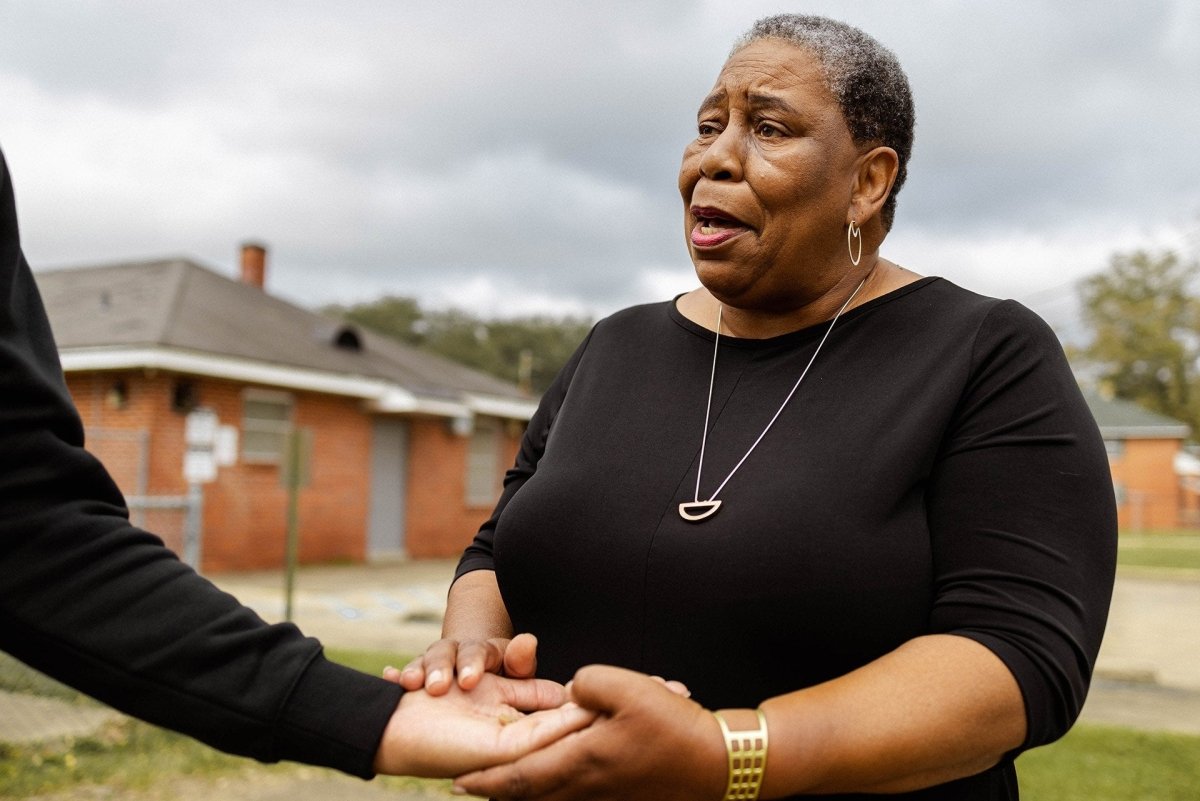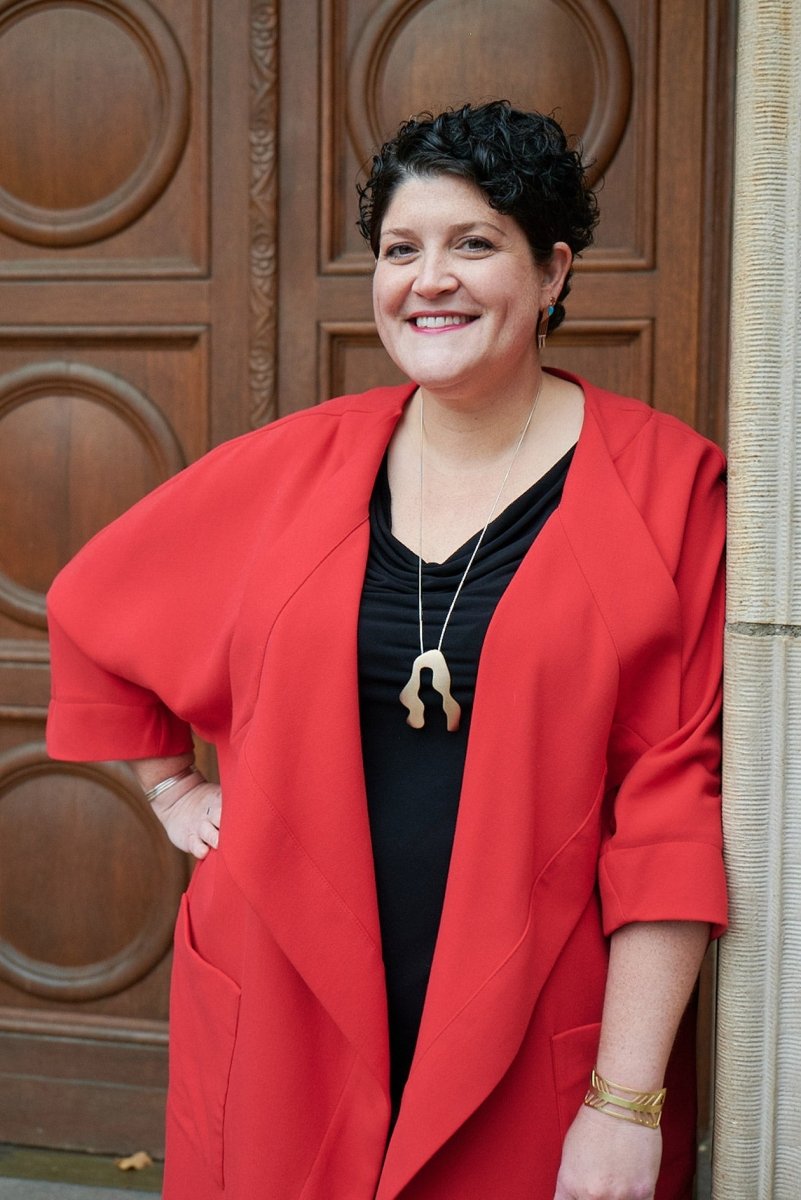By Frayn Masters | 12/26/2020
What a pleasure it is to share with you a bit about the incredible Mrs. Joanne Bland, a woman whose life was forever changed on the Edmund Pettus Bridge, more commonly known as the Selma Bridge. Mrs. Bland curates the profits collected from the Betsy & Iya Selma Bridge Cuff.
Mrs. Bland was on that bridge March 7th, 1965 — was one of the youngest marchers at just 11 years old — protesting alongside John Lewis and Hosea Williams, as they set out to cross the Alabama river to make their way to Montgomery. She may have been young, but she says was a veteran at this point having already marched for three years.
“We were going because a young man was killed in Marion, Alabama — we were protesting his [Deacon and Civil Rights activist Jimmie Lee Jackson] death, and we were going to demand the right to vote.” It was all different that day Mrs. Bland says, “For some reason this march was silent. We’d usually sing songs. And that wasn't happening, it was totally quiet.”
That day also stood out, she says, because the street was empty. The marchers were usually heckled and called names by bystanders on Broad Street, the street that runs across the bridge. No police cars or Sheriff were waiting either, which was also not typical. It was new, too, that, “the state troopers were on the other side of the bridge and the sheriff and deputies had been hiding behind the newspaper building behind the marchers… some of them were on horses,” she says. She wasn’t worried though, because John Lewis would go down on one knee and everyone else would do the same. John or Hosea would go down on one knee and say a prayer, she says, “Then we’d go back to where we started from, plan a strategy to regroup, and come right back.” But that’s not how it went this day. There was craziness and chaos, she thought she heard a shot from police, but it was tear gas cannons being shot into the crowd. Before they could all turn to run it was too late. A brutal attack by police followed where Mrs. Bland says her 14 year old sister Lynda later received 35 stitches above her eye and on her head.

“My background growing up here in the South and going through what we went through in my childhood shaped the way I am today. I am just me and I don’t know anything else. And I'm going to keep on doing what I do.”
March 7th, 1965, was the first time Mrs. Bland set foot on the bridge, “I had never walked across that bridge before in my life.”
You might know that dark day in American history by the name Bloody Sunday. Three weeks later on March 21st, however, President Johnson sent in the National Guard to protect protestors. Lynda was the youngest person to complete the full journey to Montgomery, where Doctor King delivered his “How Long? Not Long?” speech. “Lynda walked every step of the way,” says Mrs. Bland, who walked the first and last leg. The journey from Selma to the capitol in Montgomery took five days.
Mrs. Joanne Bland shares stories of her life that are filled with humanity and are meant to recalibrate your history compass and set it straight. When we spoke to her over the phone, Mrs. Bland’s voice exuded a sunny depth of soul that belies the pain she has suffered at the hands of oppression. Her voice rises to a strength of character that makes it no surprise that when that call came to write and speak her stories, she answered.
Going to protests was all the kids talked about in school, says Joanne. If they heard about a march they’d just get up and walk out of class. Though some teachers were afraid, others would say, “Go on out there and get your freedom.” It was just what you did as a kid.

Mrs. Bland owns and operates Journeys for the Soul — her tourism company that offers educational tours on civil rights.
She is on a mission to put people, most especially young folks, in the seat next to her. Through her eyes they experience a dose of the day to day, of the hour to hour reality of growing up in Jim Crow Selma, Alabama. Her lived experience is witness to the atrocities leveled against hers and generations past. She speaks of the struggle and unbreakable will it took her, other children, and adults to gather and put their shoes to pavement again and again to fight for their own stolen, constitutionally guaranteed civil rights. Person by person, Mrs. Bland acts as a guide to help her tours understand how we got to where we are now, and deliver hope for where it’s possible to go.
“And I want to say this for the record”, Mrs. Bland’s voice rises to bright tones, “I'm just over the top with praise for the young people who are out there today, and I hope they stay out there. I do tend to encourage this, that's the only thing that's gonna make a change, is that they stay out there and keep bringing awareness of what's wrong just like we did in the 60s. Just stick to it. Nothing was given to us as citizens of the United States, we had to take it. You have to change hearts to make it right.”
Mrs. Bland says that early on in her childhood her parents protected her from the white parts of town. All she knew, she says, was church and community and love.

The “I Have A Dream” Monument in the front of Brown Chapel AME church. This monument used to say “I Had A Dream” Mrs. Bland fought for many years to have it changed.
When Joanne was 3 years old her mother passed. Enter into the household, Mrs. Bland’s beloved maternal grandmother, Sylvia Johnson, from the North–Detroit more specifically. Her arrival would change everything for Joanne, her older siblings, and their dad. Her grandma started taking Joanne to church for mass meetings and to the meetings of the Dallas County Voters’ League — where at first she was confused, she says, about why people were talking about getting their freedom. Like children still are taught to this day, she was taught that Abraham Lincoln freed the slaves, so that meant black people had freedom now.
In the book of stories she wrote along with Lynda, Stories of Struggle: Growing Up In The Segregated South, Joanne captures her experiences as a child, writing about liberties not afforded to people of color — most especially in the white parts of town – and the moment the fight for her liberties rose up:
One day we were in front of Carter’s [drug store] when one of Grandma’s friends walked up. After greeting Grandma’s friend, I became bored. I turned to look in the window of the Carter’s at the lunch counter. A little white girl with long yellow hair sat on one of the stools eating an ice cream cone. She was twirling and seemed so happy. I longed to be on that stool.
My Grandma noticed me looking in the window. She tapped me on the shoulder lightly to get my attention. She leaned close to my ear and looked in the window too. She said, “When we get our freedom, you will be able to sit on that stool and eat ice cream, too.” I became a freedom fighter in that moment.

Brown Chapel AME church in Selma, AL. Brown Chapel was the center of the movement where mass meetings were held. The successful march from Selma to Montgomery began on the steps of the church.
Going to protests was all the kids talked about in school, says Joanne. If they heard about a march they’d just get up and walk out of class. The teachers would turn their backs so the kids could leave and the teacher, you know, “didn’t see them go.” Though some teachers were afraid, others would say, “Go on out there and get your freedom.” It was just what you did as a kid.
Mrs. Bland’s dad didn’t want the girls going to the marches. He was afraid for them, “but as soon as he’d go out the door, my grandma would say, ‘Go get your freedom, girls.’ She was a strict disciplinarian but she was a great woman.”
Mrs. Bland shares stories filled with humanity that’s often lost in history books, stories seen through the eyes of a child. As an 11-year-old, Mrs. Bland once spent 8 days in prison after being rounded up for protesting. She says, “By day 3 it was hard, I wanted to go home crying.” They would jam 20 or so people into a cell meant for two, remove the mattresses from the beds, and feed her dried beans without cleaning out the dirt and rocks. “The first time I went to jail I was scared, but I was with my grandma and she said not to worry. After a while I started playing with the kids in the cell.” We would sing songs and we were all together. She says that twice she got out of jail in the morning and was back that same evening. Another time, she and a large group of protestors were let out of jail after being in for several days. The officers made a big show of walking the group to the courthouse. They’d had no chance to shower. The group packed out the courtroom and Mrs. Bland says, “The judge took one whiff of the room and said, ‘Get them out of here!’ And it was funny as heck to us, we laughed and laughed and ran out of there. I guess you have to find humor in suffering. I’ll never forget that one.”

The last piece of cement left from where the Bloody Sunday March started located inside the George Washington Carver Housing Projects. Mrs. Bland is presently trying to preserve this piece of cement through an organization she is co-founding called Foot Soldiers Park.
The white people would take pictures of her and the other children protesting and show them to their parents and say, “Is this your child?” And then those white parents would demand the Black parents tell their children to stop protesting or they’d lose their jobs. “And we were poor,” Joanne says, “most of our livelihood depended on those white people. My grandmother worked in the homes of those white people.” But her grandma still encouraged them. Joanne says they were also fortunate because her dad drove a cab, which offered him independence.
After the events of Bloody Sunday, Mrs. Bland’s father changed his mind about his daughters protesting. After seeing his daughter with stitches in her head, he was on board. He started marching. And about that change of heart her grandma said, “It’s about time.” Joanne laughs and adds, “We were all glad though.” He even drove his cab with Joanne and her other siblings to Montgomery on March 25th so they could march the last leg, joining Lynda. Together they watched Doctor King give his famous “How Long? Not Long?” speech. Six months later, after Johnson signed the Voting Rights Act, Mrs. Bland says that she felt a sense of accomplishment that felt like it was a victory; the act finally prohibited discriminatory voting practices. “It was a sense of power, we had done something, everyone was jubilant and happy.”
When we asked her about the protests happening now and for the past several years in response to the murders of Black Americans like George Floyd, Michael Brown, and so many others, she said, “When I see protests today, I see a beautiful, beautiful rainbow of people, not just Black people, people of all persuasions are out there fighting for the same thing.”

Photographer Jazmine Powers with Mrs. Bland on the Edmund Pettus Bridge in Selma, Alabama.
About her own protesting she says, “My background growing up here in the South and going through what we went through in my childhood shaped the way I am today. I am just me and I don’t know anything else. And I'm going to keep on doing what I do.”
Her rich life story leaves Mrs. Bland with a complex relationship to the Selma bridge. She recounts the first time she tried to walk across the bridge again. “It was in 1993 I had a group of about 80 third graders [on a tour] and I had a panic attack. I couldn't do it. I couldn’t do it until Obama came in 2008. That was the first time I walked since 1965, even though there is a reenactment every year, I just couldn’t do it.”
She talks about how the bridge most of the time is just a bridge, a structure that gets people where they need to go that week. “I don’t know when that change happened where the bridge came to symbolize what it symbolizes to the world because [to me] it was home, just home.” Mrs. Bland tells us that since the 60s, a bypass has been built so one wouldn't have to drive through town or cross the bridge to get to Mrs. Bland's home. But she doesn't use the new bypass, even though she lives on the side of town closest to it. “I never used it because I never felt like I was home until I went over that bridge.”


Mrs. Bland's business has been especially hard hit by the pandemic. Please join B&I in making a donation to help her important work continue.
To learn more about Mrs. Joanne Bland, please visit Journeys for the Soul.
PHOTOS BY JAZMINE POWERS
///
So, how did it come to be that Mrs. Bland became the curator of the Selma Bridge Cuff funds?
We’ll start with the genesis of the cuff. In the winter of 2018, Betsy Cross, Designer and Founder of Betsy & Iya, says the Selma Bridge Cuff idea came to her at a time when many of us were struggling with what more we could do to help to stifle the ugly forces at play in our country. “It was the right time to design and add a new bridge cuff to our series and it was the right time to use our business and platform to send a message of solidarity, peace, and hope.” Along with her partner, Will, Betsy trusted they would find the right person and organization to steward the funds collected.
That brings us to a long road trip Will took in 2019. Driving across country from Chicago to Portland, Will listened to the White Lies podcast about Rev. James Reeb’s murder (highly recommended). It’s here that he first heard Mrs. Bland’s voice weaving in and out of each episode. It had an immediate impact.
Will got his courage up to reach out. Would this woman on a national podcast be interested in being involved with a Portland entrepreneur? She said yes.



